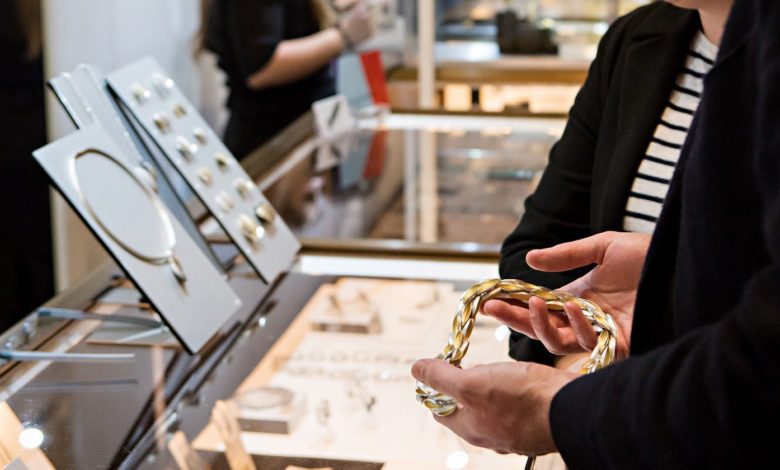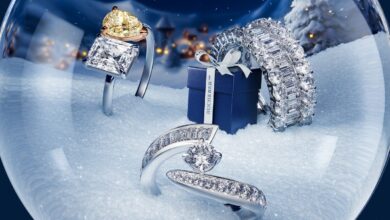The repair department is in the back

Register to get 1 free article
Reveal the article below by registering for our email newsletter.
Want unlimited access? View Plans
Already have an account? Sign in
How many times have I heard that in jewellery stores? Too many times. Do jewellers really know how much in lost sales this costs them? Of course not, otherwise they would stop saying that. Some jewellers pass this off by saying: “Oh Betty knows when there is a potential for a sale and she will get someone.”
What I want to know is why is he leaving it up to Betty when he has salespeople supposedly trained to know if these repairs can be converted into sales? What is even worse is when a salesperson passes off the customers to the repair department and doesn’t bother at all to go there to follow up.
I have been writing about leaks in jewellers stores in previous issues of Jewellery Focus and brushing off customers to the repair department is one of the biggest leaks. Jewellers can stop this by telling their salespeople, when they are not busy, to take in all repairs. This solves one problem, but creates another. Most salespeople have no idea what to look for to convert repairs into sales. Here is one of the best examples.
Worn Claws and Shank
Too many salespeople recommend to just retip the prongs. They should know that it could take 15 to 20 years for the prongs to wear down, therefore look at the shank and they will see it is also worn thin, but then they make a costly mistake. They think a repair for several hundred pounds is a good sale. Jewellers have no idea of the diamond sales they are missing. When I point this out to them their excuse is that their customers want their old ring back and just fix it.
What that salesperson neglected to do was not acknowledge the sentiment of her diamond ring. “Barbara, I am sure your diamond ring is sentimental.” Failure to do this first and not to have introduced yourself can turn a customer off and that is why she said to just fix it. Her diamond ring is the most emotional item she posses, especially if it is her engagement ring.
Only a small percentage of salespeople in the UK and in the US introduce themselves. You should introduce yourself with both your first and last name, allowing her time to respond with hers, then remember her name so you can use it just a few times when you want to make a point like in the above example. Before you know it you will be talking to her like a friend and not a customer.
I find it odd that most salespeople only want to use their first name, but when I ask them what if the owner only printed their first name on their business cards? Then they see the light. You have gained her trust because she knows who you are.
You will be believable explaining that it was due to the wear of her ring throughout the years that the prongs became thin and sharp enough to catch her clothes. When prongs are thin then show her the shank is also worn thin. Be aware, some customers think that all you have to do is add gold. Assume this and tell them the setting that holds her diamond has to be replaced and also the shank. Too many salespeople stop right there. Happy they are creating a repair sale for a few hundred pounds.
They don’t take the next step explaining only part of the sentiment of her original diamond ring will remain and that you have another suggestion, leave her present setting as is to preserve the sentiment and you will set her diamond into a new setting with diamonds that will make her diamond appear even more brilliant.
Show her a diamond ring with a diamond approximately the size of hers and she will see the
difference. After she selects a new setting show her how much you regard the sentiment of her old setting by saying: “ I will polish your ring to make it look like new and set a cubic zirconium in it and it will look like the original ring. Now you will have a family keepsake and I will give you one of our fine ring boxes to keep it in.” Instead of selling a repair you have created a diamond setting sale and made your customer feel even more sentimental about her diamond.
I saw my father, Harry Zell take it a step further. Instead of prejudging that she could not afford a larger diamond he assumed her financial circumstances had changed these past 20 years and said: “Barbara, I bet after all these years you would like to have a larger diamond.” Most often the reply would be, yes.
He went on. “To preserve the sentiment of your diamond I can set it on one side of your new diamond with a matching diamond on the other. I’ll have my jeweller put a small mark under the setting of your diamond to identify it.” That closed the sale. This is how I learned to sell to my customer’s emotions and create larger diamond sales of two carat and larger.







